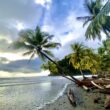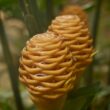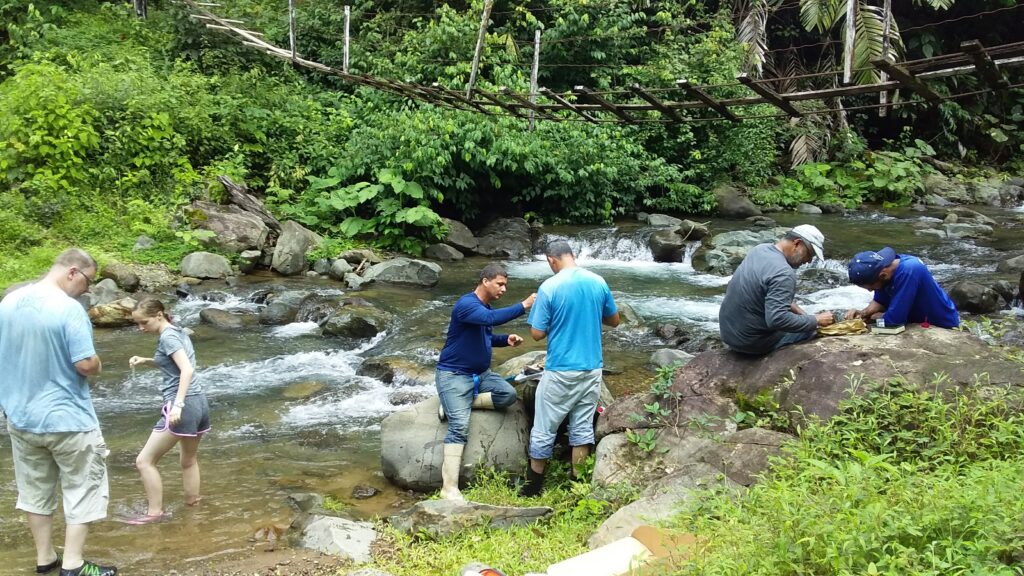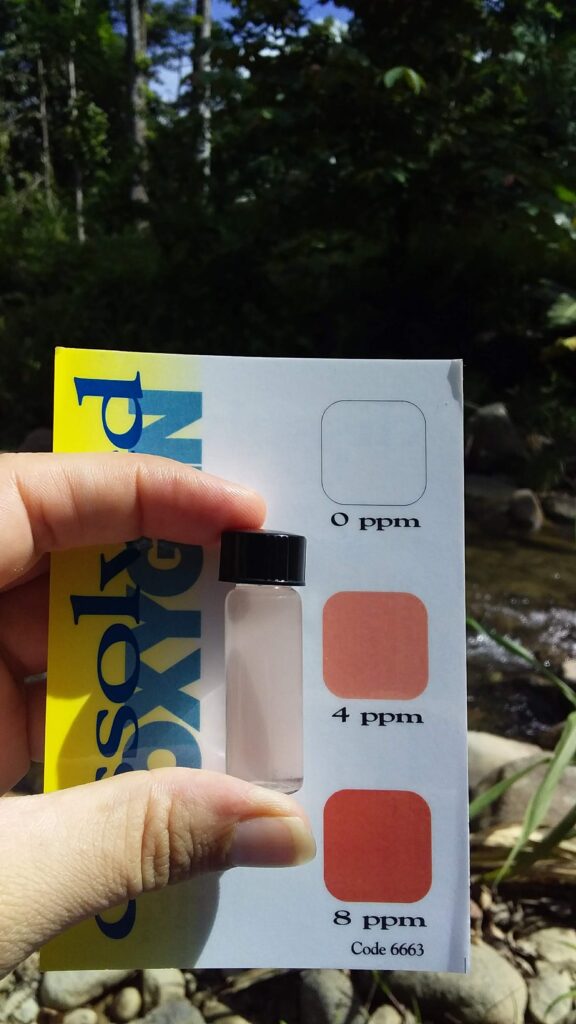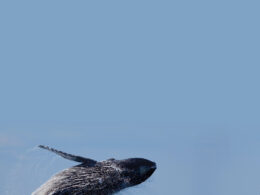Thanks to the support of Somos Foundation, a Costa Rican not for profit that helps communities develop sustainable practices, the participatory monitoring in the Balso, Tortuga, Punta Mala and Coronado rivers was started in collaboration with ASADAS, the Costa Rican Institute of Aqueducts and Sewers. Since March 2019, the analysis of Physical-Chemical Factors and the use of aquatic insects as water quality bioindicators has been under the microscope. There are three sampling points: high altitude, medium (sea level) and low land zones.
The project responds to the need that arises from wanting to know the state of water quality in rivers, as well as what is in the best interest for its conservation. In rural areas of Costa Rica, the Associations Administrators of Aqueducts and Sanitary Sewers (ASADAS), have the function of keeping the aqueducts in good condition according to the policies issued by the state through Aqueducts and Sewers (AyA), for the supply of drinking water in their community. Since 2015, the importance of carrying out an Integrated Management of Water Resources has been promoted and established.
The ASADA was assigned to actively participate with the community in the conservation of water resources. With that the interest in studying the quality of water became obvious, and they went in search of actions that would allow us to recover contaminated bodies of water and/or keep those that are not yet degraded in good condition. However, due to the lack of tools and training for the ASADAS they were at a disadvantage, that is, until the RPT, Reserva Playa Tortuga, decided to help. The RPT manages the equipment, supplies and initiates a training process for the ASADA officials of Ojochal and Coronado in order to promote monitoring as a participatory process. With the appropriate techniques, they can understand and protect their rivers and allow the evaluation of the quality of surface waters in the rivers of their communities. All of this as a precautionary measure in the face of climate change, pollution and the pressure of tourism development that progresses in the area.
The research is expected to generate relevant information for river conservation, as well as the generation of a didactic guide for the identification of the most common aquatic insects in the area, which in turn will facilitate the use of these bioindicators in future studies.
By Melissa Jiménez-Kardentey

